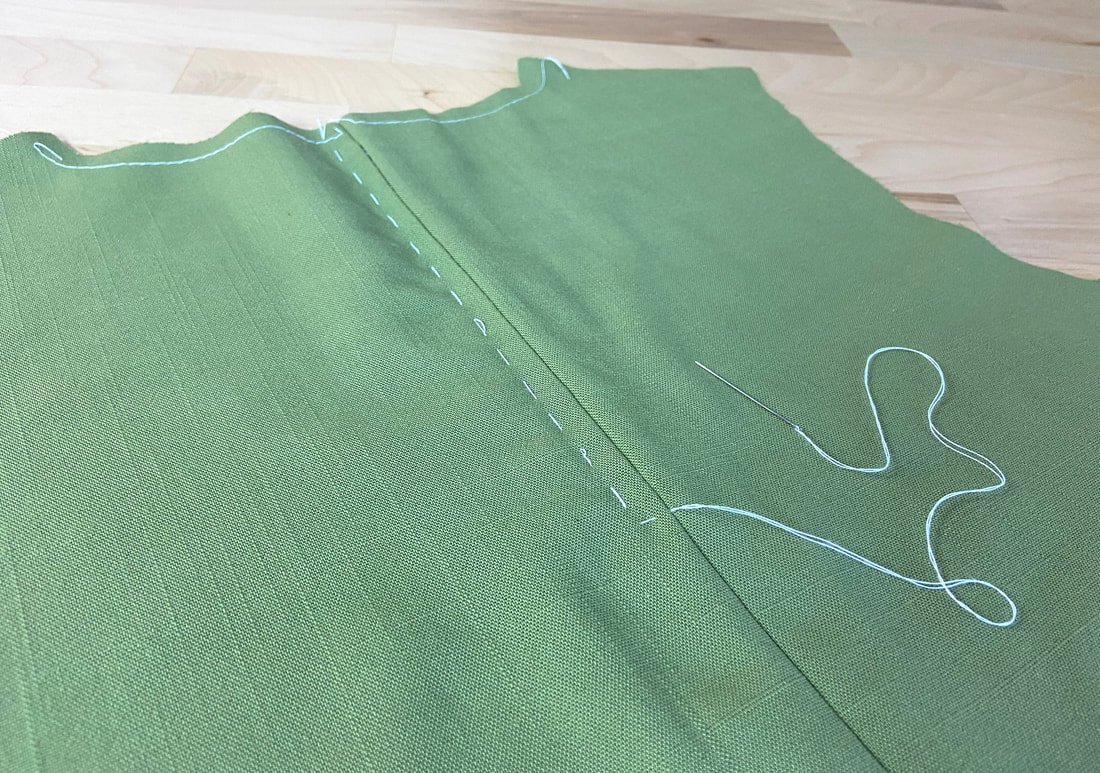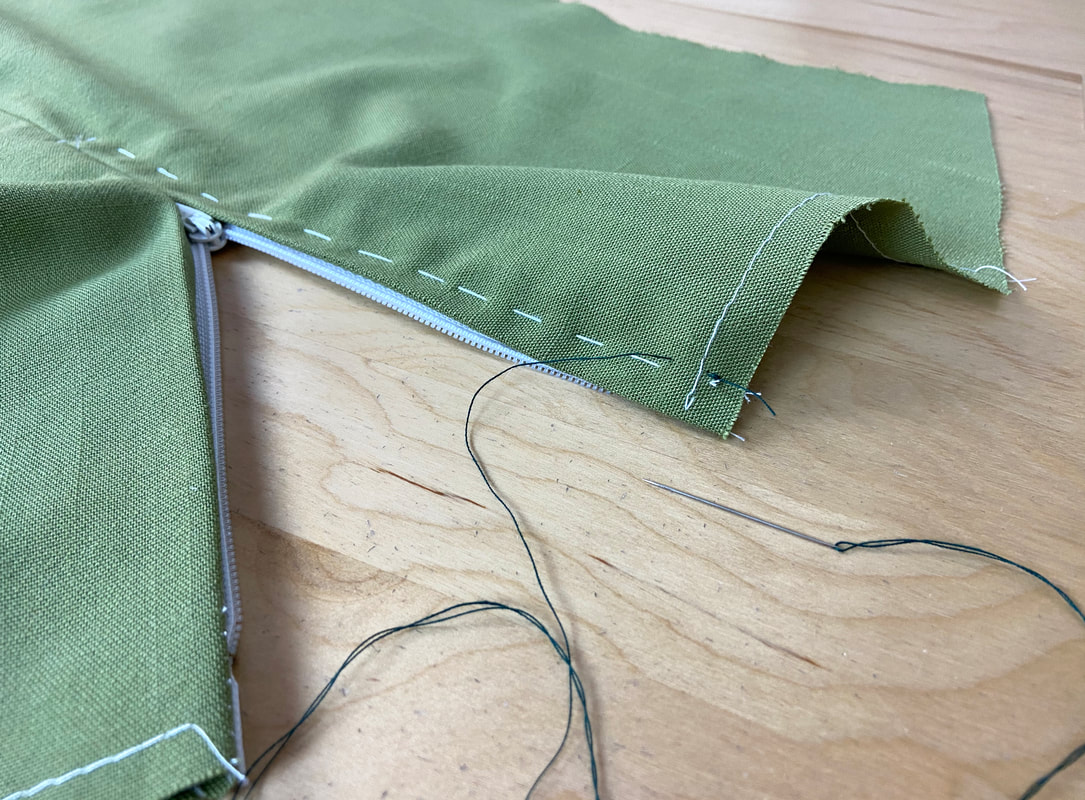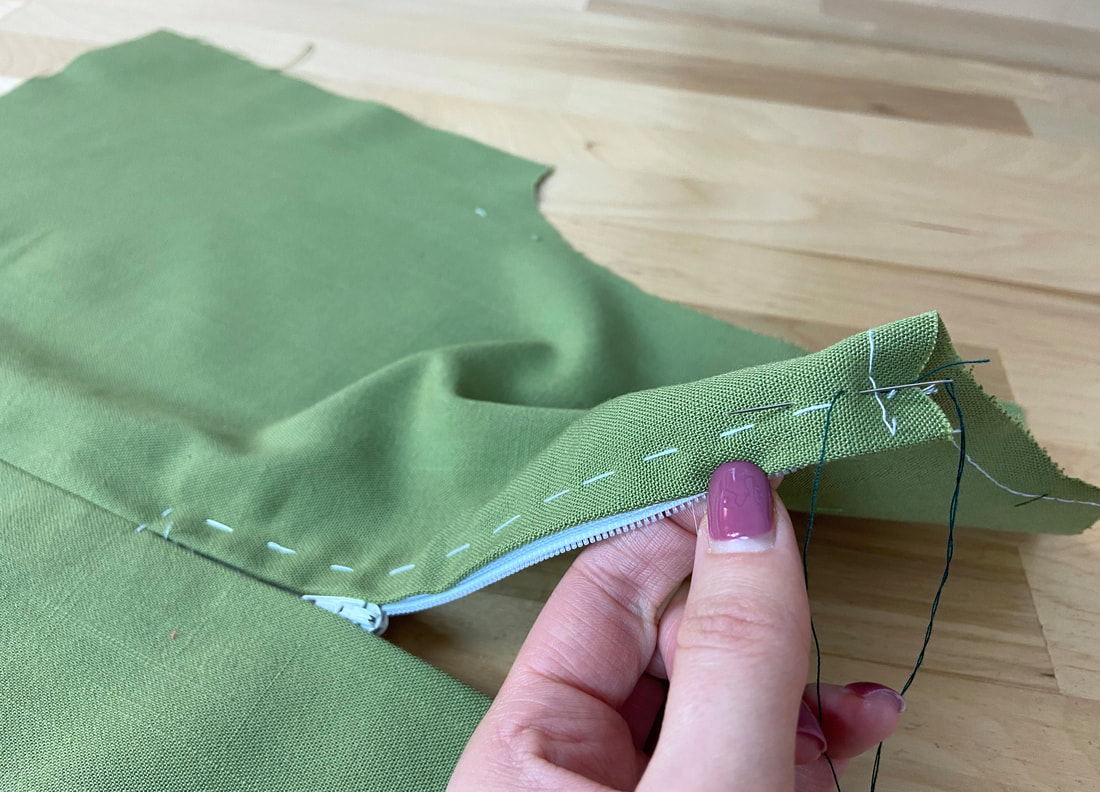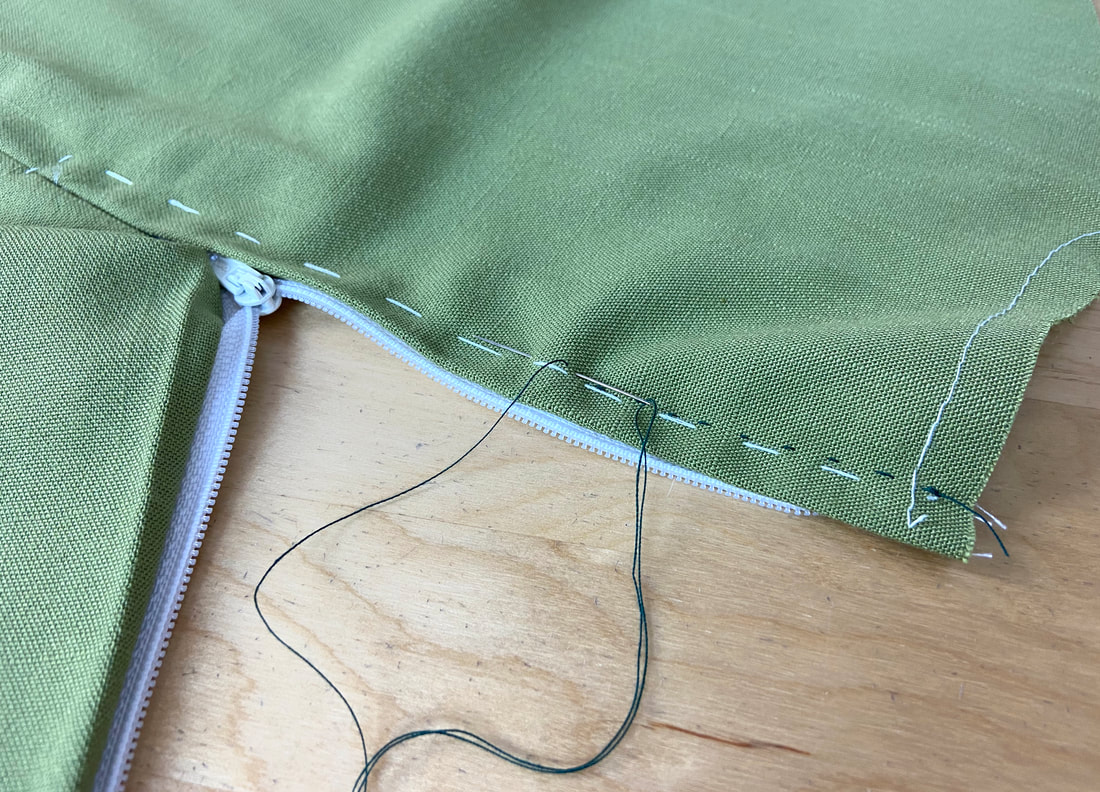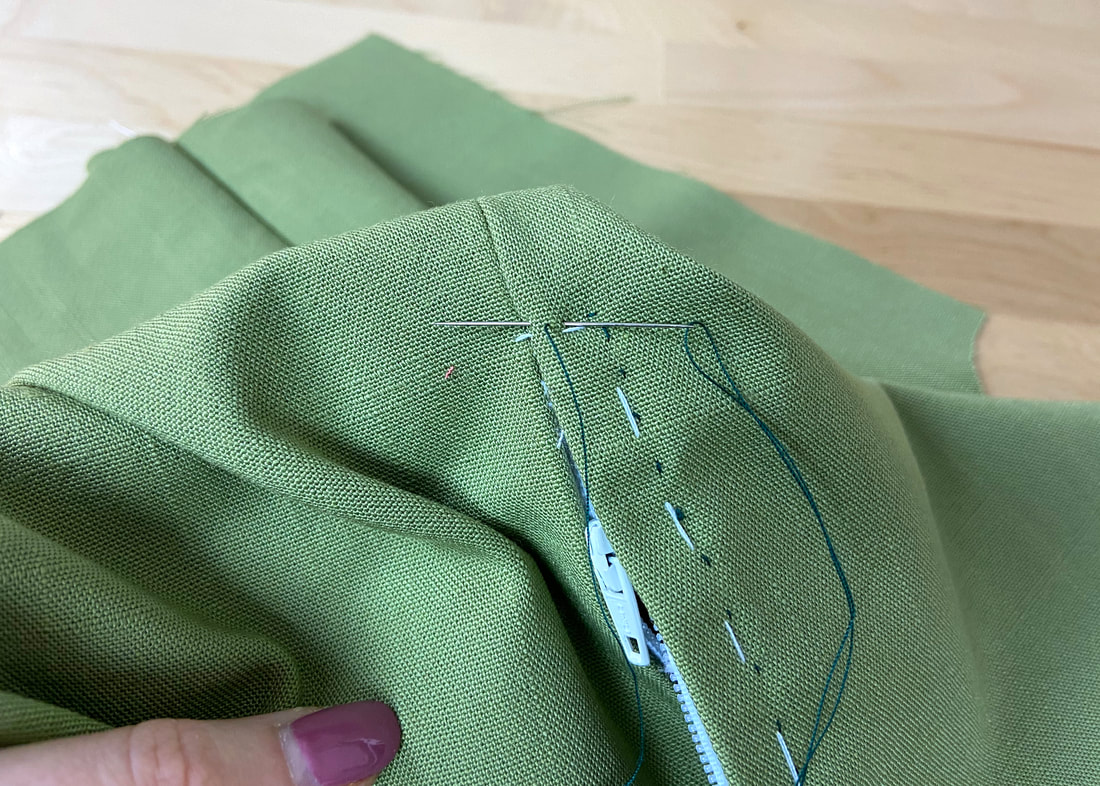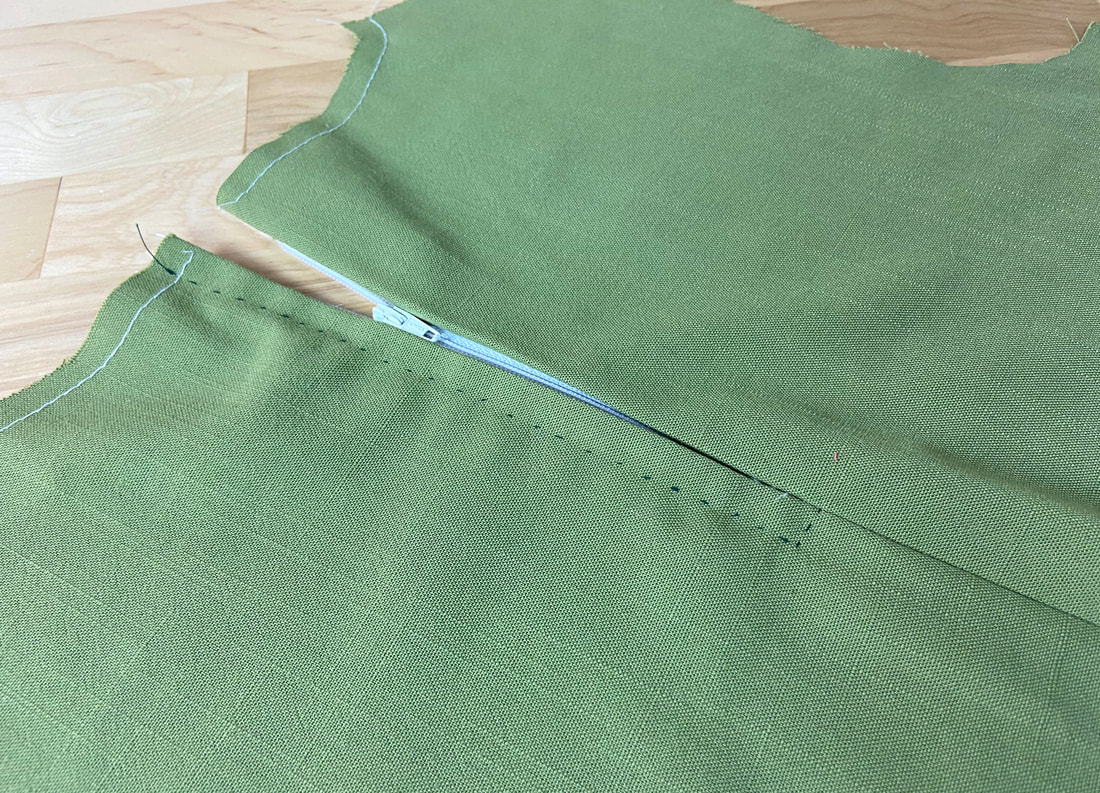Mini Tutorial: How To Sew A Prickstitched Zipper Application
A prickstitched zipper finish is applied by hand and can be used with most conventional zipper applications such as a lapped or centered style.
Start by stitching the zipper to the garment opening as you would with any regular application.
Start by stitching the zipper to the garment opening as you would with any regular application.
1. From the right side of the zipper application, hand baste the zipper's placket line through the garment and zipper tape layers underneath. This hand basting stitch should be applied at the exact shape and location of the final zipper placket.
2. Open the zipper fully as this will make it easier to handle during the stitching process to follow. Starting at the top edge, stitch a few times in place within the seam allowance area to lock the threads.Next, take a longer stitch through the garment and zipper tape layers, inserting the stitch right along the hand basted line as shown above. A 3/8" length should be sufficient for this stitch although you can apply it closer or father apart as desired.
3. Stitch back through the space created by the initial stitch at about 1/16"-1/8", then bring the needle back out at the same distance in front of the initial (long) stitch applied in Step 2 above. Pull the thread through to create the first prickstitch- this should resemble a short dash line.
4. Continue stitching back then forward again following the same distance and proportions between the stitches. Equally spaced dash lines should start to form. Follow the hand basting line as a guide, stitching next to it but not directly on top of it.
5. When arriving at the bottom, pivot the prickstitch horizontally (following the hand basting) and continue to stitch in this fashion until you arrive at the seamline. At this point, pull the thread to the wrong side of the garment and stitch in place a few times to lock the threads.
6. Once complete, remove all hand basting with a seam ripper. Left behind should be an evenly positioned, straight prickstitch constructed of evenly sized dash stitches placed at an equal distance from one another.

